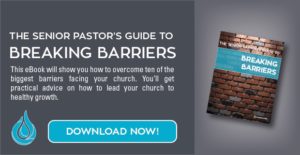In Phil Savage’s incredible new book 4th And Goal Every Day, former Cleveland Browns general manager Mike Lombardi said, “All you had to do was look at the various draft ‘war rooms’ on NFL draft night to see the potential for mistakes. These rooms were crowded with scouts and personnel men, people with opinions on players. It was not crowded in the New England Patriots’ draft room, which was run by (head coach Bill) Belichick. There was not a multitude of decision makers inside that room. It was a small group of people. The decision maker was the system.”
Notice some of the phrases used:
- potential for mistakes
- rooms were crowded
- people with opinions
- multitude of decision makers
In the most efficient organization in pro sports, the New England Patriots, there is a small group of decision-makers. As I read Lombardi’s words, it mentally catapulted me into many church decision-making rooms I have been in.
Many times I will talk to a church of 150 (or 1500) attenders and there are 30 individuals in the decision making group. Similar to NFL draft rooms, I know the probability of a good decision being made is very low. This happens because the pastor wants to build consensus and incorrectly thinks inviting many people into the room is the way to go. And of course we know why, if “Sister Mary” is not invited, she may be offended.
But as Mike pointed out, when the decision-making room is crowded, there are a multitude of unqualified opinions and the potential for mistakes. After all, getting 30 people to agree on anything is next to impossible. The pastor and other top leaders then want “unity”, so the item is tabled to next month allowing for a “season of prayer”. The urgency for the decision stalls in the name of unity and prayer. Ultimately, no decision is made and the church does not advance forward in its mission and vision.
A Critical Leadership Mistake Churches Preventing Many Churches From Growing Is Their Decision-Making Group Is Too Large.
My recommendation is to have a leadership team of 8 to 12 high-capacity individuals. Many fast-growing churches are staff led. The staff serves as elders with the senior pastor being the first among equals. If you want lay involvement, the most effective churches I see are staff led and elder governed. The staff implements the day-to-day ministry with elder oversight.
Smaller, high-capacity leadership teams allow you to be nimble and appropriately aggressive in making the quick decisions needed to advance your mission and vision.
The harsh reality is that whether you are the New England Patriots, a business, or a local church, the smaller the leadership team, the more effective you will be.
The more effective you are, the better decisions you will make.
The better decisions you make, the more likely your church is to grow.
The Senior Pastor’s Guide To Breaking Barriers – In this FREE ebook from Church Fuel, you will learn the practical steps to breaking through Spiritual, Cultural and Structural growth barriers. Click HERE to download your copy.

